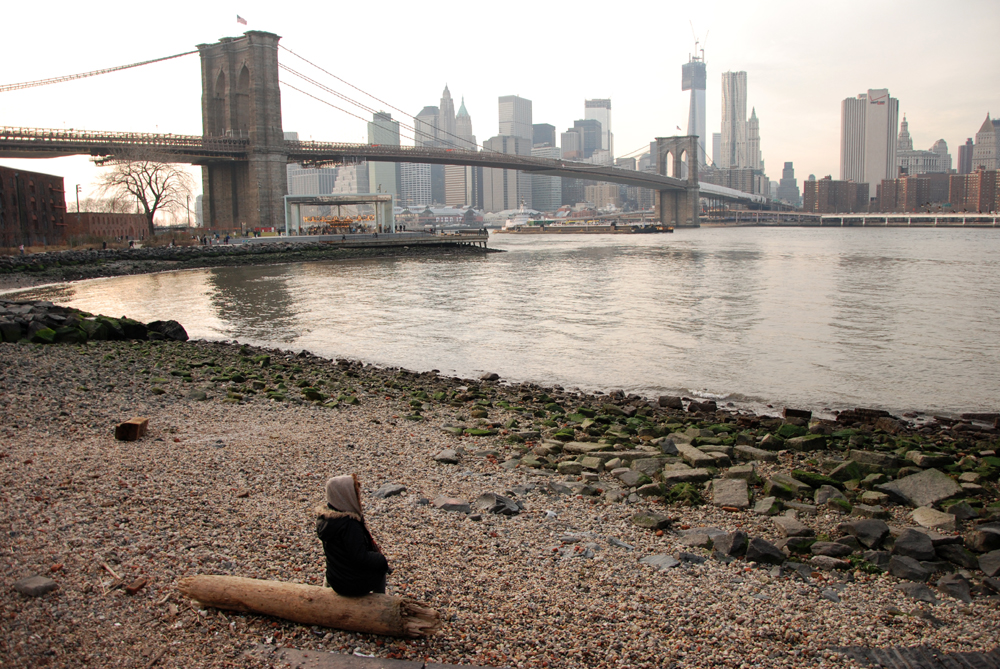Jersey City: Seeking Great Public Spaces
During the last several decades, Jersey City has redefined itself from a floundering industrial hub to a center for white-collar office work. At the same time, an aspiring arts community has seen its fortunes rise and fall and rise again, and urban-minded individuals and families view Jersey City as a place to move to, not to move from. This pattern augurs well for the future of Jersey City.
Large commercial structures and massive apartment buildings dot the Hudson River waterfront and its adjacent neighborhoods, and similar projects are now slated for areas throughout the city. From the corner near my home, I can see the fifty-three-story tower being erected at Journal Square. Is the building boom and population influx ultimately good for the city? Depends whom you ask.
Opinions and hyperbole aside, a growing city is a dynamic, vibrant city. Large and small cities with shrinking resources, populations, and tax bases unfortunately are all too common throughout the the United States. Several such cities, for example, Camden and Trenton, can be found in New Jersey.

Jersey City, New Jersey (Courtesy of Wikipedia).
When looking at the Hudson River boardwalk or the soon-to-be tallest building in the Garden State, a different question should be posed: are these intriguing, daresay inspiring spaces? Additionally, as the city develops, is the government keeping pace with exciting public and civic spaces? Jersey City appears to be failing on both counts. Sadly enough, this is anything but a shock.
Jersey City’s leadership appears to chase after every dollar and give every concession and tax break to any investor. In the 1980s, this was understandable, possibly necessary. Today, Jersey City is a desirable locale and a nearly surefire investment. Yes, real estate developers are still going to request zoning variations and tax abatements. Why would they not? The city government, however, should strike much better deals, requiring developers to follow superior architectural standards and contribute to the creation of an aesthetically pleasing and useful public sphere. After thirty-odd years of wholesale redevelopment along the waterfront and its periphery, where are the awe-inspiring buildings, artfully designed parks, and must-see spots around town?
The rebirth of Jersey City is an outgrowth of the resurgence of Manhattan. This had led to a “rediscovery” of Brooklyn, Hoboken, and, of course, Jersey City. How has each place managed its investments and new populations?
The DUMBO neighborhood in Brooklyn resembles a larger Powerhouse Arts District in Jersey City: a cluster of nineteenth-century and early twentieth-century warehouses and industrial spaces. Today, DUMBO is a thriving neighborhood with a mix of restaurants, bars, nightlife, businesses, art spaces, and housing. DUMBO’s waterfront has been carefully and beautifully sculpted into a public park with piers, green spaces, and rocky shores. Revelers crowd the neighborhood’s cobblestone streets on weekends. Protected by historical designation, the buildings have been exactly preserved and retrofitted to meet the needs of contemporary dwellers and businesses.

Scene from Brooklyn Bridge Park. Why doesn’t Jersey City have such inspiring spaces? Notice the warehouses beneath the Brooklyn Bridge and the crowd at the carousel on the pier (Courtesy of Curbed NY).
And the Powerhouse Arts District? Jersey City shredded its very own development plan for the Powerhouse Arts District and cravenly allowed developers to dictate the terms and destroy the character and charm of the neighborhood. Do the arts or artists still populate the Powerhouse Arts District? Maybe a few, but the neighborhood lacks even a shred of the vibrancy of DUMBO.
Hoboken sits next door to Jersey City and historically rivals it in political corruption and malfeasance. Yet, compare the Hoboken waterfront to that of Jersey City. That’s right: you cannot. Paths for biking and walking run the entire expanse of Hoboken’s waterfront. Lawns, shady spots, playgrounds, ball fields, and performance spaces all hug the shore.
Jersey City’s waterfront offers pleasant views, but very little in public amenities. There is a private marina. Office and apartment buildings edge the boardwalk. The spectacular Hudson River largely has been given to private interests and entities.
The new Jersey City lacks good public spaces. If Jersey City aspires to become a true force in the region; maintain its newly arrived creative, middle, and upper classes; and fashion itself as a model for urban policy, it must create worthwhile and grand public spaces. Is there already too much unimaginative development and neglect of the public sphere? Does the political leadership not comprehend this critical need? Does the larger public simply not care? Is it just too late?
All hope is not lost. Several real opportunities for great public spaces exist in Jersey City. This blog’s next post will explore them.
(Special thanks to Alex Marshall for exploring why cities lack new great spaces in his article published in Governing.)